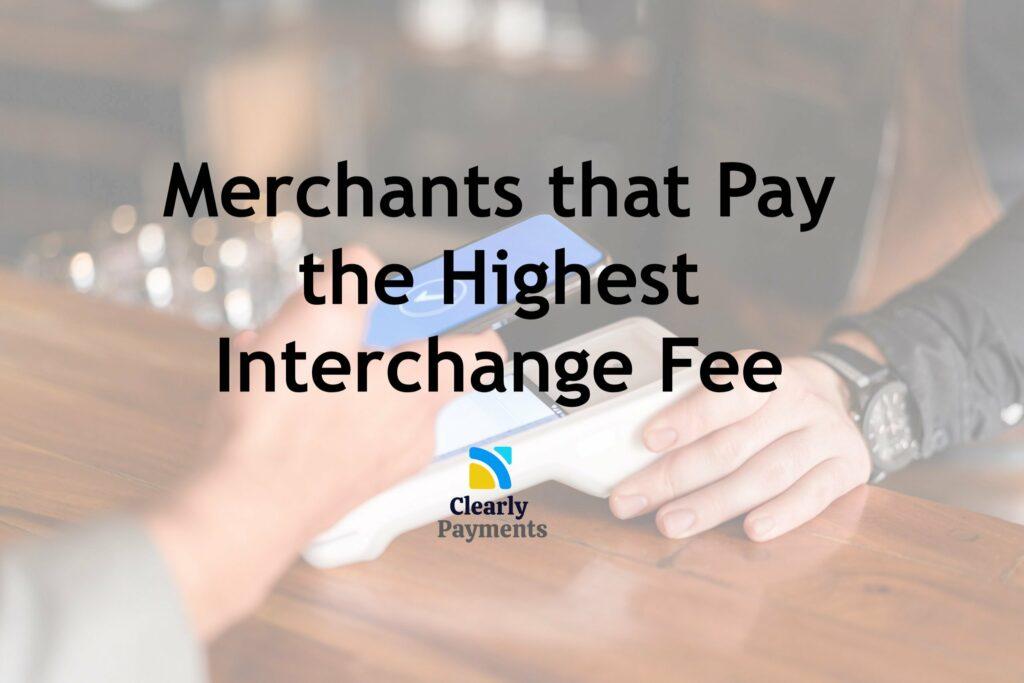Interchange rates are fees that merchants pay to credit card processors and issuing banks for accepting credit card payments. The fee is based on things such as the type of credit card being used (premium, rewards, basic, etc), the type of transaction (in-person, online, etc), and the type of business (high risk, low risk, etc).
In general, merchants who accept online payments or premium credit cards with high rewards programs can expect to pay higher interchange rates. However, there are several reasons that some businesses pay higher interchange fees than other businesses. This is a list of some of the main reasons some merchants have higher interchange rates.
We’ve written a lot on interchange fees, so you can also check out how interchange fees work in payments. After you learn about why some merchants have high interchange rates ,you can also read some tactics you can deploy to lower your credit card processing fees.
Merchants that have customers with premium credit cards pay higher fees
Premium credit cards have higher interchange fees. Premium credit cards are rewards cards and business credit cards. Therefore, if you are a business that has luxury goods and services, you likely have high-end customers. Many high end customers have premium credit cards being used. Premium credit cards can have at least double the interchange fees compared to basic credit cards.
Here is a list of the types of credit cards that have higher interchange fees:
Rewards Cards: Credit cards that offer rewards, such as cash back, points, or miles, tend to have higher interchange fees due to the additional benefits offered to cardholders.
Business Cards: Business credit cards typically have higher interchange fees compared to consumer credit cards. This is because business cards often have higher spending limits and offer additional features and benefits, such as expense management tools.
Premium Cards: Premium credit cards, such as black or platinum cards, typically have higher interchange fees compared to standard consumer cards. These cards often offer additional benefits and services, such as concierge services, travel insurance, and premium rewards programs.
Corporate Cards: Corporate credit cards, which are used by companies for business expenses, tend to have higher interchange fees compared to consumer or business cards. This is because these cards typically have higher spending limits and are used for larger transactions.
Businesses that are in a higher risk industries pay higher fees
The industry that a business is in has a large impact on the interchange fee they pay. Higher risk industries pay higher interchange fees. When they say “risk”, they are referring to the likelihood of a chargeback. A 1% chargeback rate is the industry-standard maximum, which equates to one chargeback for 100 successful orders. The average rate of chargebacks is around 0.47%.
Higher risk industries, therefore higher interchange fee industries, are those like travel, furniture, advertising, and money transfer services. Lower interchange rate industries are food and beverage, apparel, pets, entertainment, and grocery. Higher risk industries can easily pay 50% more than lower risk industries.
Merchants that accept credit cards remotely rather than in person pay more
The way credit cards are accepted changes the risk therefore changes the interchange fee. In general, in-person transactions are much lower risk than on the internet or over the phone.
Overall, online payments have the highest average interchange fees. Most fraud comes from online transactions. The average online credit card interchange fee in North America is around 2.30%, which is much higher than basic interchange fees.
Check out some of the best practices for remote, card-not-present, and online payments.
Smaller merchants pay higher interchange fees than large corporations
An example of a highest interchange rate business
If we put all this together, an example of the highest interchange rate business would be something like an online business accepting payments remotely, in a high risk industry like custom furniture, that caters to a high end customer using “black” credit cards.
A customer like that can expect to pay the highest fees in payments. We see businesses like that all the time and they sometimes pay their current processor 5% or even more. TCM works hard to by giving merchants strategies to keep payment processing rates low.




